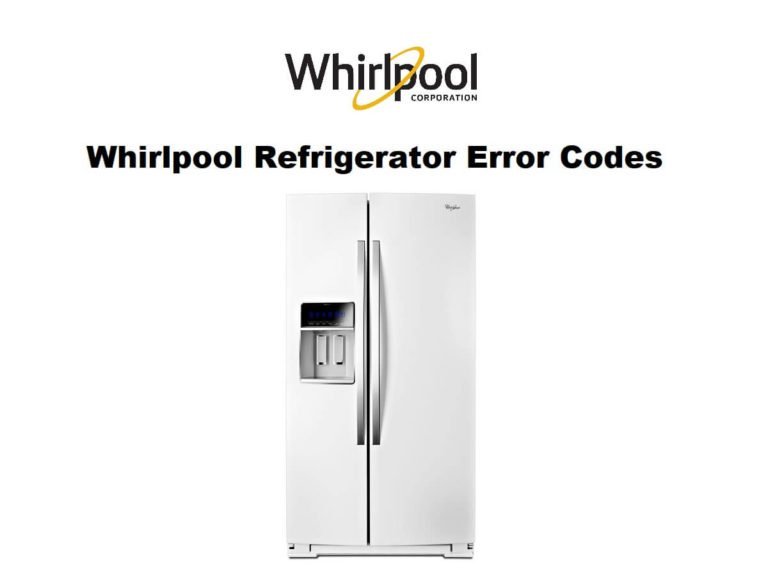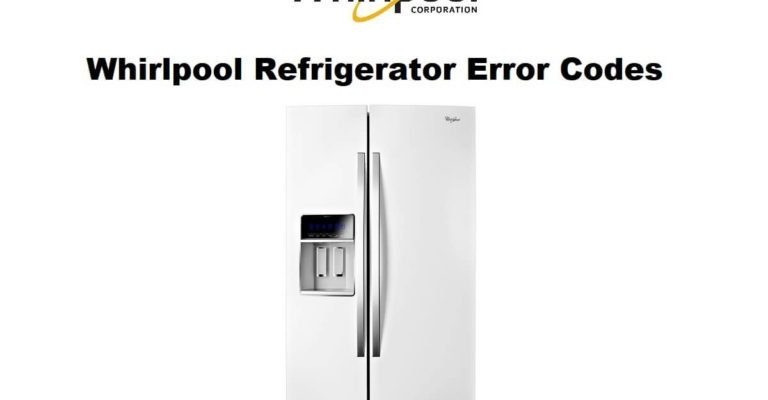
Think of it as your fridge’s way of sending a message—like how your friend might text you when they’re running late for lunch. The E2 error code specifically signals an issue related to the refrigerator’s temperature sensors. But rest assured, this isn’t as daunting as it sounds. There’s usually a straightforward explanation and solution to get that fridge back to cooling your favorite foods perfectly.
Understanding the E2 Error Code
Now, let’s dive a little deeper into what the E2 error code is telling you. In the simplest terms, the E2 code is usually related to a problem with the refrigerator’s temperature sensors. Imagine those sensors as your fridge’s internal thermometer. Just like how we rely on a thermometer to tell if we need a sweater, your fridge uses these sensors to maintain the right temperature for your food. When a sensor malfunctions, it might send mixed signals, causing the fridge to either overwork or underperform, which is exactly what the E2 code is alerting you about.
So, what might cause a temperature sensor to fail? Well, it could be a simple electrical issue, like a loose connection, or the sensor might have worn out over time. Sometimes, external factors like excessive dust or moisture can interfere with its operation. It’s also possible that an internal component might be on the fritz, much like a remote control when the batteries are nearly drained.
When faced with this issue, don’t panic. Often, power cycling, which means turning the fridge off and back on, can reset the sensors and clear the error. It’s like rebooting your computer when it freezes—sometimes that’s all it takes. If the error persists, though, it might be time to roll up your sleeves for a bit more investigation.
Steps to Troubleshoot the E2 Code
Alright, time for some hands-on troubleshooting. First things first, always prioritize safety. Unplug your refrigerator before investigating any internal components. This is crucial—kind of like putting on a seatbelt before you drive. Once your fridge is safely unplugged, you’re ready to start poking around.
Begin by locating the temperature sensor. Check your user manual if you’re unsure. It’s usually found in the fresh food compartment. Once you’ve found it, inspect for any obvious issues, like disconnected or damaged wires. If everything looks intact but the E2 code is still flashing, consider whether the sensor might be compromised. Fortunately, replacement sensors are usually available and relatively inexpensive.
If replacing the sensor doesn’t do the trick, it might be time to call in the pros. Sometimes, the problem might lie deeper within the fridge’s control board—a part that’s a bit more complex, like the brain of the operation. A technician can perform the necessary tests and diagnostics that aren’t always possible at home.
Preventing Future Error Codes
Having tackled the E2 code, you’re probably wondering how to avoid seeing it pop up again. It’s much like eating well to fend off future doctor visits. Regular maintenance is your best ally. A good start is ensuring your refrigerator is placed away from heat sources and has adequate ventilation. This helps maintain optimal operating conditions for all parts, including those temperature sensors.
Every few months, consider giving your fridge a thorough cleaning, focusing on the back of the unit where coils and vents often gather dust. It’s much like cleaning out the filter of your vacuum cleaner—necessary for smooth operation. Also, keep an eye on your door seals. If they don’t seal properly, warm air can sneak in, which can confuse the sensors.
Lastly, if you live in an area with frequent power surges, investing in a surge protector might protect your refrigerator’s electronics from unexpected jolts. It’s a small step that can prevent more than just the E2 code—it can keep your refrigerator running smoothly for years to come.
In conclusion, the E2 error code might seem intimidating at first glance, but understanding and addressing it doesn’t have to be a mystery. With a little troubleshooting know-how and regular maintenance, you can keep your Whirlpool refrigerator happy and humming, providing you a constant supply of fresh, perfectly chilled food.
